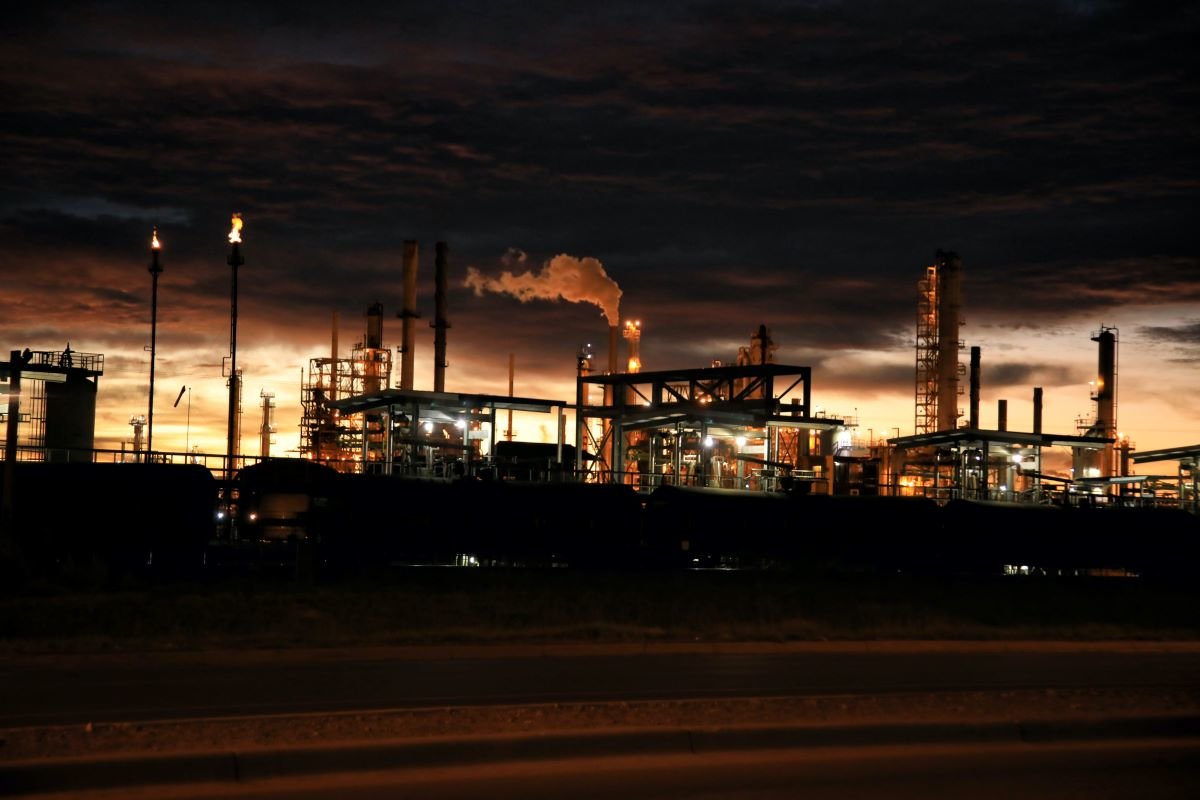The past few months have seen a flurry of intriguing and at times cynical announcements from the international oil companies. In November 2017 Shell’s CEO announced the firm’s intention to halve its carbon footprint by 2050 and to increase its spending on clean energy by $2bn a year in order to help meet the goals of the Paris Agreement on Climate Change.
Of course, the level of commitment by Shell is nowhere near Paris-compatible but it’s the first time the firm has taken responsibility for end use emissions from the products it sells. This was followed in December with an announcement that the company had purchased the UK independent energy supplier First Utility, marking a decided shift into selling electrons as well as molecules to energy-hungry customers.
The other side of the pond ExxonMobil, responding to a lawsuit filed against it and 17 other oil companies alleging the companies’ emissions amount to a public nuisance under state law, lodged a counterclaim, alleging the cities leaders are coercing ExxonMobil and others to adopt policies for political gain. It remains to be seen how successful these moves in their various forms will be, but this does start to look like a sector that sees the writing on that wall but struggling with the right strategy to respond.
The international oil companies (IOCs), including Shell and Exxon, have for some time now been operating at the margins of profitability. In some cases dividend payments to shareholders are being funded through borrowing from capital markets. This is not new. What is new is that current profitability challenges are likely to be further intensified by structural factors relating to growing national oil company (NOC) competition and declining demand for products as large markets, including for example the European single market, strengthen their energy efficiency and renewable energy policies out to 2030. This fundamentally puts at risk the IOC’s ability to repay these debts, which are contingent on a sustained return to higher prices.
The public and private interests in the financial outlook for of the oil and gas majors are significant. For example, analysis undertaken in early 2017 found Shell and BP alone were responsible for £4.8bn of the £12.5bn of total FTSE 100 dividends. Similarly the national oil companies are significant contributors to budgets of their owner governments – in the case of Saudi Arabia and Russia contributing over 50% of revenues to the public budget. As a result, there is growing concern around whether and how they can transition to become Paris-compatible in manner that minimises wasted capital expenditure and/or likelihood of bad debts accumulating.
That is the question that new research from E3G, the University of Oxford Smith School of Enterprise and the Environment and Chatham House sought to answer in a recent project, the final report of which is now published.
The three organisations worked together to set out some of the dynamics being faced by, and options available to, the IOCs to become Paris-compatible. The Oxford Sustainable Finance Programme and E3G then worked together to design an online wargame that simulated the process. The wargame – entitled the ‘2 Degree Pathways decision support tool’ – was then used to explore the different pathways companies could take in transitioning to Paris-compatibility and model their impact on shareholder value. The wargaming tool was developed and deployed in two stages: first to explore the impact of the climate transition on the IOCs only; second to add the NOCs into the wargame.
We made five key findings that we hope will provide useful insights to civil society groups campaigning for accelerated climate action and investors coalitions including the Climate Action 100+ initiative, whose signatories have committed to “work with the companies in which we invest to ensure that they are minimising and disclosing the risks and maximizing the opportunities presented by climate change and climate policy.”
First, the wargaming sessions indicated that of the possible business strategies initially identified for the IOCs in the research phase of this project, only two – named First one out (i.e. a managed decline/decapitalisation strategy) and Planned transformation (to a green energy company), had the potential to be commercially viable. While the IOC-only wargaming showed the for the IOCs a Last one standing strategy is viable, it requires other companies to choose an early exit. However, once the NOCs were added into the wargame, it was clear the Last one standing would not be an IOC.
Second, the IOCs are already responding to changing market and policy dynamics. However, to date in the real world the overwhelming influence on the companies has been the collapse of the oil price from its high of $116 bbl in July 2014 to $70 bbl January 2018. The IOCs should ‘bank’ current changes to their operational models but further work must be done to adapt their current business strategies to manage the growing risks of changing demand patterns and oil price volatility. Over the next 2 decades, flexibility and resilience should be the most important influences in company business planning.
Third, the wargaming revealed that there is significant path dependency to the IOCs successfully changing current business strategies i.e. decisions made in the early years of the game had a significant impact on later outcomes for the IOCs. For example, we consistently found that initial trading of assets is a critical factor to enable First one out and Planned transformation strategies to be executed successfully.
Fourth, there is significant path dependency to managing IOC debt levels. In some years of the game debt quickly spiralled out of control and players effectively bankrupted their companies by failing to pay attention to and then address this. Conversely, we found that those players that focused on paying down debt in the early years gained a clear advantage in later years.
Fifth there are significant risks posed by herd behaviour among the IOCs, especially with regards to the accumulation of green assets with a view to executing a Planned transformation strategy. For example, in the most aggressive decarbonisation scenarios, once it became clear how fast oil demand was falling, there was often a ‘run for green’ in the mid to late 2020’s. This fierce competition for green resources was also found to prevent companies from successfully completing the transition process. Players that performed best at the Planned transformation strategy started investing in green assets early (pre-2020) and in a sustained manner, thus achieving a significant level of transition before the herd behaviour kicked in.
So what does this all mean at a practical level going forward? Several linked observations regarding what is needed from investors, the firms themselves, governments and civil society to help deliver an orderly transition to Paris-compatibility in the oil and gas sector have emerged.
For the IOCs the best long-term strategy (Planned transformation or First one out) is likely to be the most difficult choice to make. It will require investors shifting attitudes and expectations to allow companies to plan beyond typical 1 to 3-year period. Current moves both in the UK and the EU to clarify that the obligation of institutional investors and asset managers to explicitly integrate material environmental, social and governance factors into investment decisions creates a cultural context more conducive to this happening.
Considerable oil and gas price volatility is likely to be present in a decarbonising world, which can result in very high prices even at much lower levels of demand. The stress placed on companies and events in NOC countries can still lead to the market being undersupplied, presenting opportunities for the IOCs to monetise higher cost reserves. The urge by IOCs to interpret these moments as a return to oil demand growth in particular and a signal to invest in further exploration should be resisted. There is a key role for civil society, asset managers, asset owners, investment consultants and the commentariat to play in ensuring this message is heard loud and clear. A first step would be for key stakeholders to build a public conversation around understanding the limits of current oil and gas sector analysis and modeling.
IOCs should work quickly to implement the recommendations of the Taskforce on Climate-related Financial Disclosures (TCFD) as a key instrument to facilitate an orderly transition to Paris-compatible business models. Meaningful disclosure and communication of a longer-term strategy is integral to giving the IOCs ‘breathing space’ to open effective dialogue with investors over how to address the disruption to the oil and gas sector and truly become part of delivering an orderly transition to 1.5/2°C. To address competitiveness concerns and the disincentives to public disclosure that currently drive corporate behavior, governments beyond those of the UK, France and Sweden as well as the EU, should seriously consider the case for making climate risk disclosure mandatory.
Stress testing IOC and indeed NOC business planning against a variety of climate scenarios will aid the process of understanding path dependencies and increase the chances of a successful transition that maximises value for shareholders with the minimum negative impacts on society. The wargaming tool we have developed offers an example of what dynamic TCFD implementation looks like – and the authors encourage interested stakeholders to use and build upon the findings of this decision support tool.
Finally, across all the scenarios run it was clear that timing will be critical in successful decision-making, that IOCs have limited options available to them and that these options are highly dependent on the actions of their peers. In the IOC-only game, much more value was lost in the late transition scenario than the orderly one. This means governments have a clear responsibility to investors and the societies they govern to set out an early and orderly 1.5/2°C transition pathway as required by the Paris Agreement on Climate Change.
2018 is the year when countries have agreed to convene a facilitative dialogue to ratchet up national ambition to reduce greenhouse gas emissions. Governments need to make it count.


